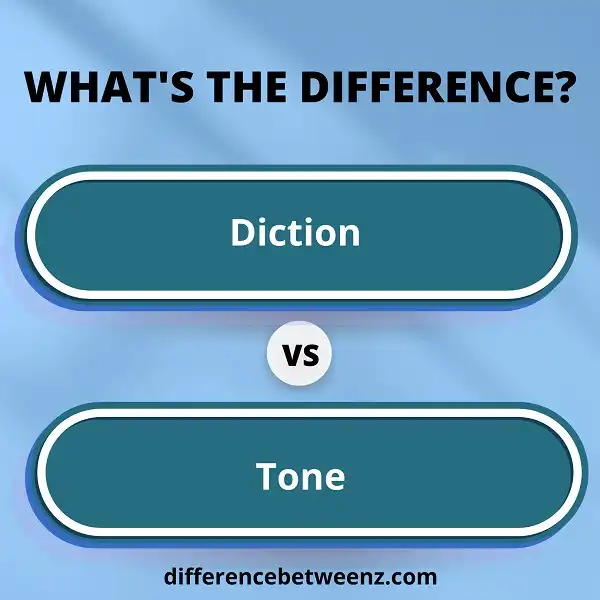In order to produce a piece of writing that is effective and engaging, it is important to understand the difference between tone and diction. Tone refers to the author’s attitude or feeling towards the subject matter, while diction refers to the words that are used and their connotations. A writer can use different words to convey the same message but with a different tone, depending on what they are trying to achieve. For example, if you wanted to sound professional in your writing, you would use more formal language with less slang. Alternatively, if you wanted to be more engaging and friendly, you might use more colloquial language. It’s important to be aware of these differences so that you can choose the right words for your particular purpose.
What is Diction?
Diction refers to the choice of words that a speaker or writer makes. It can have a significant impact on the meaning of what is said or written, as well as on the overall tone. Good diction selections can help to communicate your message more effectively, while poor choices can make it more difficult for your audience to understand what you’re trying to say. While there are many factors to consider when making diction choices, some common things to keep in mind include word connotation, level of formality, and intended audience. With practice, you can learn to use diction effectively in order to communicate your message more clearly.
What is Tone?
Tone is the attitude of a writer toward their subject and/or audience. Tone can be conveyed through word choice and grammatical choices. For example, consider the following two sentences:
“This is a great party!” cried Sarah.
“This is a terrible party,” grumbled Sarah.
Both sentences are about the same event, but the tone differs greatly. The first sentence uses words like “great” and “cried,” which creates a tone of excitement and happiness. The second sentence uses words like “terrible” and “grumbled,” which creates a tone of frustration and anger. Tone is an important aspect of writing because it can affect how readers interpret the text. In general, it’s best to maintain a consistent tone throughout a piece of writing, unless you’re deliberately trying to create contrast for effect. Tone can also vary depending on the genre or form of writing. For instance, formal business writing generally has a more serious tone than casual blog posts or email messages. Understanding the expectations for tone in different contexts will help you make choices that are appropriate for your audience and purpose.
Difference between Diction and Tone
Diction and tone are two important aspects of writing. Diction refers to the choice of words used, while tone refers to the overall mood or feeling conveyed by the writer. Diction can be formal or informal, depending on the audience and purpose. For example, a research paper would generally use formal diction, while an email to a friend would be more likely to use informal diction.
The tone of a piece of writing can be positive, negative, or neutral. It can also convey feelings such as happiness, anger, sadness, or fear. The tone is often determined by the subject matter and the writer’s attitude towards it. For instance, a news report about a natural disaster would likely have a serious tone, while a comedy sketch about the same event might have a more light-hearted tone. In general, it is important to choose both diction and tone that are appropriate for the audience and purpose.
Conclusion
In order to have a professional tone in your writing, it is important to be aware of the difference between diction and tone. Diction refers to the words you choose, while tone reflects your attitude towards those words. By being conscious of the connotations of your words and using language that is clear and concise, you can create a tone that leaves a positive impression on your readers.


